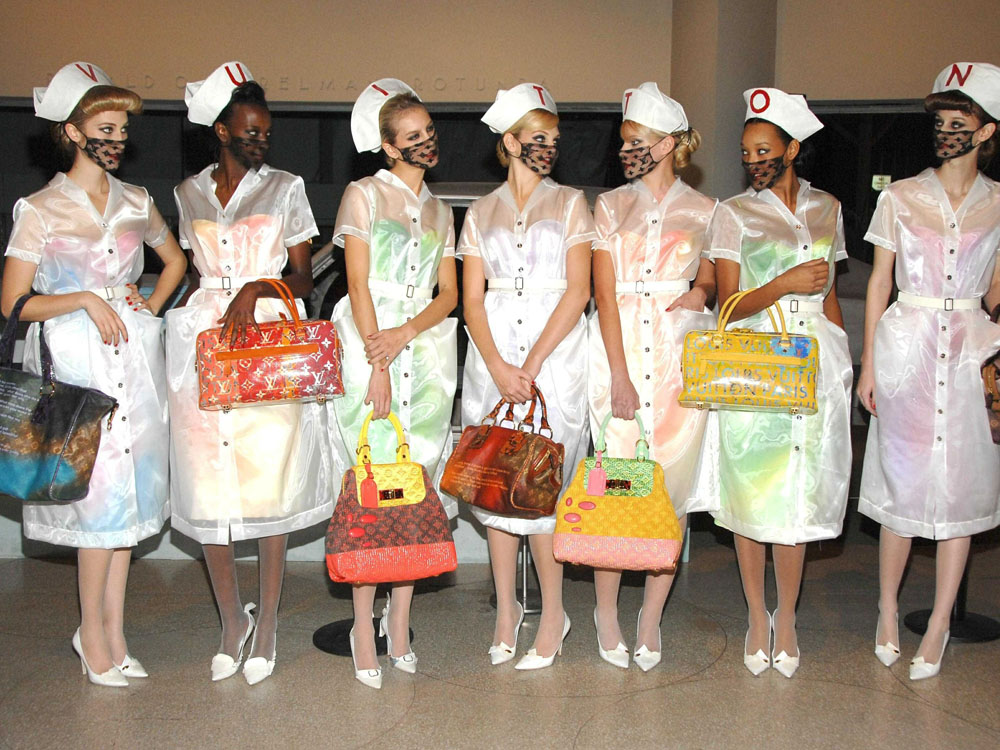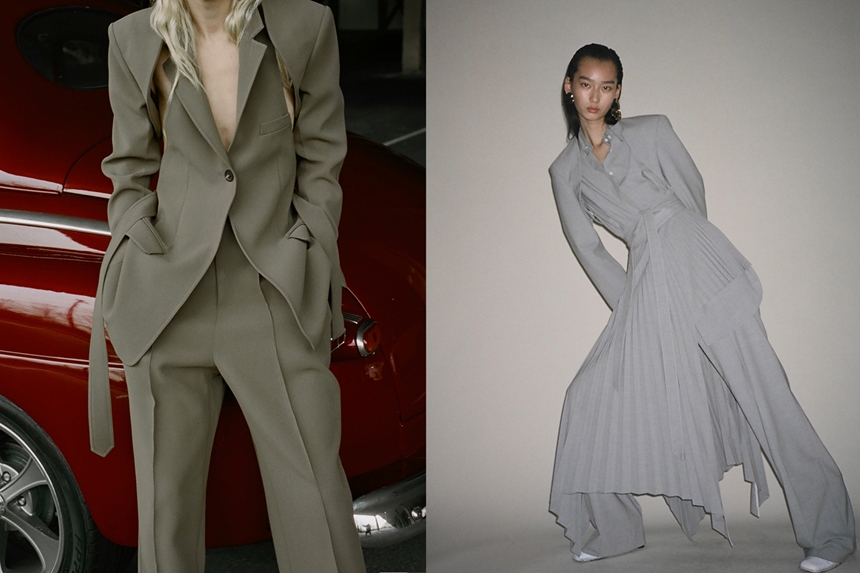In Part One of the History of Paris Fashion, we dove into Paris’ beginnings as early as the 17th century through to the masterful creation of many brands we’ve come to love today, and discovered the origins of the French stripes we’re all so familiar with.
The twentieth century held much promise for Parisian fashion. The USA, once looked down upon by the French for its lack of history and sophistication, was redefining itself as a contemporary style destination. In the 1960s, London was the swinging capital of irreverent, revolutionary fashions. Mini skirts and bare feet epitomised the “beatnik” look of the era. France’s answer came from André Courrèges, who introduced mod fashion to Paris runways with short skirts and knee-high white patent leather boots. Elsewhere in Europe, Italy was forging its own distinct sense of style, deliberately distancing itself from the French capital and creating its own rich cultural identity in fashion.
Italy was becoming a powerful adversary for France, in part due to country’s long history of leather goods merchants and quality tailoring. But France always had a few aces up its sleeves.
Louis Vuitton was founded in 1854, and is one of the world’s most long-standing fashion houses. The brand began as a trunk company, with the designer pioneering the signature flat-topped trunks whose design would be copied and imitated thereafter. Box-making was a highly respected craft at the time. From humble beginnings as a small workshop, one of the most iconic brands on the planet was born. In 1913, the Louis Vuitton building opened on the Champs-Elysees, the world’s largest travel-goods store at the time.
The signature LV monogram canvas, which consists of quatrefoils and flowers inspired by Japanese designs, was introduced in 1896 as a way to fight counterfeits. Today, the Louis Vuitton logo and signature patterns, including the classic light and dark brown checkerboard, have transcended mere aesthetics to become a visual signifier of success and wealth. Anyone who’s anyone wants to carry a Louis Vuitton bag, as a way to communicate their status.
While the brand has survived through the ages, Marc Jacobs had a large part in Vuitton’s rebirth in the 21st century. Jacob’s time at the helm began Vuitton’s genuine foray into clothing, with men’s and women’s lines that proved to encapsulate that most difficult of balancing acts: fashion that is classic while fresh at the same time.

Many of the couture houses in Paris have had to face the changing fashion landscape and adapt accordingly. Specifically, this has meant following in the direction of the masters of Italian fashion who, after separating themselves from the French scene, embedded themselves into the cultural consciousness with innovative, ready-to-wear designs. The need to compete with the burgeoning American and Italian markets led to French luxury brands creating ready-to-wear collections alongside their haute-couture designs. The rise of the middle class in the 20th century meant that brands could no longer remain profitable by only catering to the filthy rich.
Hubert de Givenchy began his career as an apprentice to the Jacques Fath couture house. He worked as an assistant designer to Lucien Lelong, Robert Piguet and Italian trailblazer Elsa Shiaparelli. Givenchy opened his own house in 1951 and was quickly lauded for his talent for innovation and his system of designing each garment as one part of a whole. Even evening gowns were interchangeable elements within wider collections of items, which could be swapped out to generate new outfits.
Givenchy went on to create fragrances for his business, Société des Parfums Givenchy in 1954. that same year saw the designer begin his long-term fashion relationship with Hollywood actress Audrey Hepburn, who would become his most famous model. Givenchy’s creations appeared in several of her films, including Sabrina, Funny Face, Breakfast at Tiffany’s and My Fair Lady. These films helped propel the brand into becoming the household name that it is today. Breakfast at Tiffany’s recreated the Chanel little black dress, the addition of pearls and a pair of sunglasses making a new iconic look.
Audrey Hepburn’s veneration of Givenchy spurred other Hollywood stars towards his designs, with Grace Kelly and Elizabeth Taylor becoming adherents to the brand.
Hepburn said of Givenchy, “His are the only clothes in which I am myself. He is far more than a couturier, he is a creator of personality”.
Givenchy was also Jacqueline Kennedy’s favourite designer, who famously wore a Chanel suit on the day her husband was assassinated. The first lady wore a Givenchy gown on the day of President Kennedy’s funeral.

Typically though, Givenchy’s style was known for its youthfulness and vibrant, cheerful colours. But the brand’s evening wear was always the height of simple chic.
In the 1970s ready-to-wear or as the French call it, prêt-à-porter, replaced haute couture at the top of the fashion pyramid for the first time.
As the decades wore on, designers had to work harder to carve out a niche for their products in an oversaturated market. Christian Louboutin emerged as the shoe designer of the era. The signature red soles of Louboutin heels have become, like Hermès, a symbol of status and sophistication.
Jean-Paul Gaultier is the French designer who most shaped the Paris fashion scene in the 1980s and 90s. instantly recognisable by the famous Gaultier silhouette of broad shoulders and cinched hips. The brand’s fashion shows made a name for the designer with their energetic and stimulating provocation.
Gaultier discovered fashion at a young age and taught himself as much as he could from fashion magazines and television. After working as an apprentice for Pierre Cardin, Jacques Esterel and other big names in the industry, Gaultier presented his first women’s fashion show in 1976. By 1982, he had established a business that would experience continued success over the decades.
Gaultier insists that fashion is never art but does view his work as the construction of beauty, “I would like to say to people, open your eyes and find beauty where you normally don’t expect it.”
Jean-Paul Gaultier has managed to maintain a stylistic consistency throughout his oeuvre, with the basic elements of a suit- jackets and trousers- forming a link between his men’s and women’s collections. Femininity is infused into womenswear with the addition of signature stockings, corsets and garters. In this way, lingerie became an item of outwear, most famously worn by Madonna at the height of her success. On her Blonde Ambition tour, Madonna donned the Gaultier cone-bra corset, an item that has transcended that moment in time to become part of fashion history.
In the decades since, luxury brands like Mugler, Lanvin, Chloe, Rochas, Vivier and Cardin have risen to the top of the ladder in the Paris fashion scene. Women’s and men’s fashion have become increasingly similar, with gender constraints gradually falling away. Menswear continues to inspire women’s fashion, the seeds for this style having been sown hundreds of years in the past. Paris continues to be on the forefront of trends, with oversized suits and sweaters designed by brands like Celine a contemporary favourite of fashion fanatics.

The French hold an enormous sense of reverence for the charms and artistic nuances that fashion brings into our lives. As the creators of modern luxury fashion, no other culture has brought such glamour and pure aesthetic allure onto the world stage.
Fashion has always been a deeply rooted facet of Parisian social and cultural life. Despite many new faces on the international fashion scene seeking to steal the Paris’ claim to the crown, none have yet succeeded. It seems that the French school’s claim on style is one that cannot be overcome. As the industry continues to evolve, Paris remains steadfast as the epicentre of style and the city of love and fashion. Parisian fashion will continue to be an inspiration to filmmakers, photographers, actors, artists and lovers for years to come.
The Girls Guides to Designer Fashion
This new 6 part series explores the seductive world of designer fashion.
Series 1. The History of Lingerie
Series 2. The Legend of the Designer Bag
Series 3. The Mystery of the High Heel
Series 4. American Fashion
Series 5. Italian Fashion
Series 6. Paris Fashion
Subscribe to FIB’s newsletter for your weekly dose of music, fashion and pop culture news!







